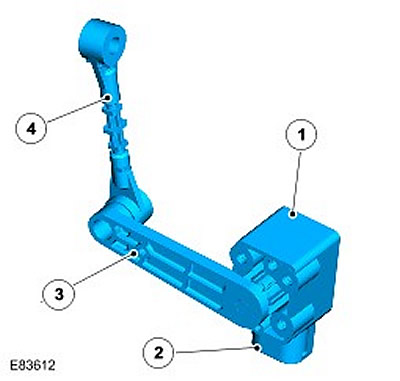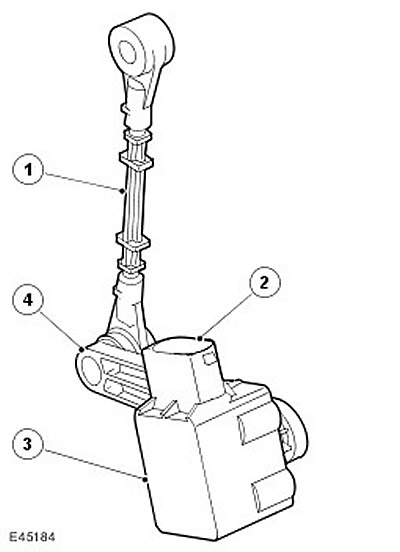Front Height Sensor

| Item name | Spare part number | Description |
| 1 | - | Sensor housing |
| 2 | - | electrical connector |
| 3 | - | Lever arm |
| 4 | - | Connecting rod |
Rear Height Sensor

| Item name | Spare part number | Description |
| 1 | - | Connecting rod ha |
| 2 | - | electrical connector |
| 3 | - | Sensor housing |
| 4 | - | Lever arm |
Height sensors are installed in each corner of the vehicle and provide suspension height control. The body of each sensor is screwed to the brackets on the rails of the chassis.
Each sensor has a housing containing a single row rotary potentiometer, a lever and a connecting rod.
The sensor arm has a connecting rod that connects the sensor to the suspension control arm. The connecting rod is a repairable part and is firmly seated on the sensor arm and suspension control arm.
The sensors are connected via electrical connectors to the air suspension control unit, which receives the signals from all sensors and converts them into height values corresponding to the positions of the sensors.
The front and rear sensors are distinguished by the installation side and are color coded for identification, which looks like this:
- Right front and rear - black lever
- Left front and rear - white lever
Calibration
The calibration procedure is carried out using Land Rover approved diagnostic equipment, which is used to read the position of each corner of the vehicle and write the parameters to the memory of the control unit. Recalibration is only required if the air suspension control unit is removed or replaced, the height sensor is removed or replaced, or the suspension arm to which the sensor is attached is removed or replaced. If a removed height sensor is reinstalled, a calibration must be performed to ensure system integrity.
If the tie rod is replaced, recalibration is not required, provided that the sensor housing has not been removed from the support bracket.
Comments on this article